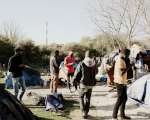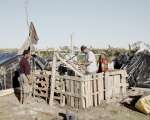- Text size
 |
|  |
|  |
| 
- Français
South Sudan fighting triggers new displacement, including into neighbouring countries
Briefing Notes, 2 June 2015
This is a summary of what was said by UNHCR spokesperson Adrian Edwards – to whom quoted text may be attributed – at the press briefing, on 2 June 2015, at the Palais des Nations in Geneva.
Heavy fighting in South Sudan's Unity and Upper Nile states over the last two months has displaced more than 100,000 people and blocked humanitarian aid deliveries for some 650,000 people as aid organizations were forced to withdraw. Since the beginning of the year, some 60,000 South Sudanese have fled the country, mostly to Sudan (30,000), Ethiopia (15,000) and Uganda (15,000) bringing the total South Sudanese who fled the country since December 2013 to some 555,000, while some 1.5 million are internally displaced in the country.
Refugees cite the upsurge in fighting, but also growing food insecurity as the main reasons for fleeing their homes. It's estimated that more than 3.8 million people, representing a third of South Sudan's population of 11 million, do not have sufficient food.
UNHCR offices in Sudan, Ethiopia and Uganda have all reported sharp increases in arrivals during May.
Last week alone, some 6,000 South Sudanese arrived in Sudan's White Nile and South Kordofan states. The majority are in White Nile State, where 87 per cent of refugee families are headed by women and 72 per cent are children. The arriving refugees are currently hosted at the border and a recently opened site known as El Redis II. Given the worsening security and humanitarian situation on the South Sudanese side of the border, UNHCR and its partners are preparing for the refugee influx to grow. The upcoming rainy season requires that we pre-position relief items as many of the areas where refugees are located can become inaccessible. To enable continuing humanitarian assistance, UNHCR is constructing a jetty on the White Nile River and building roads to refugee sites. Water and sanitation conditions at many of these sites need to be improved rapidly.
In Ethiopia's Gambella region, more than 6,100 South Sudanese refugees were registered in May, while in April the number was 4,800. Arrivals were at less than 1,000 people a month before this. In addition, an estimated 7,000 South Sudanese are at the Pagak and Akobo entry points waiting to be registered. UNHCR, the government counterpart and other partners are developing a new site next to the existing Pugnido refugee camp to accommodate new arrivals and as a contingency measure for future arrivals.
At the same time, during the last three weeks, more than 47,000 South Sudanese refugees who had settled in areas that flooded during last year's severe rainy season have now been relocated to a new refugee camp in Jewi near Gambella. The former refugee sites of Leitchour and Nip Nip are being rehabilitated and will be handed over to the host communities.
Our office in Uganda also reported an increase in arrivals over the last month of some 4,000 refugees. Many of the arriving refugees said they fled the fighting in and around the town of Malakal, in Upper Nile State, but also growing food insecurity and rising prices for basic commodities. The new arrivals are being transferred from Nyumanzi transit centre to the newly extended Maaji settlement as well as to other existing settlements.
With the number of South Sudanese fleeing their country increasing rapidly, we are extremely concerned that the 2015 South Sudan Regional Refugee Response Plan that covers the refugee programmes in the neighbouring countries, run by UNHCR and 39 partners, is only funded at 10 percent. This leaves many lifesaving activities such as the provision of clean water, sanitation and health services, food and shelter severely underfunded.
For more information on this topic, please contact:
- In Juba, Rocco Nuri on mobile +211 927 725 535
- In Khartoum, Nicolas Brass on mobile +249 9121 79443
- In Addis Ababa, Kisut Gebre Egziabher on mobile +25 19 11 20 89 01
- In Gambella, Sulaiman Momodu on mobile +251 935 978519
- In Geneva, Karin de Gruijl on mobile +41 79 255 9213












































